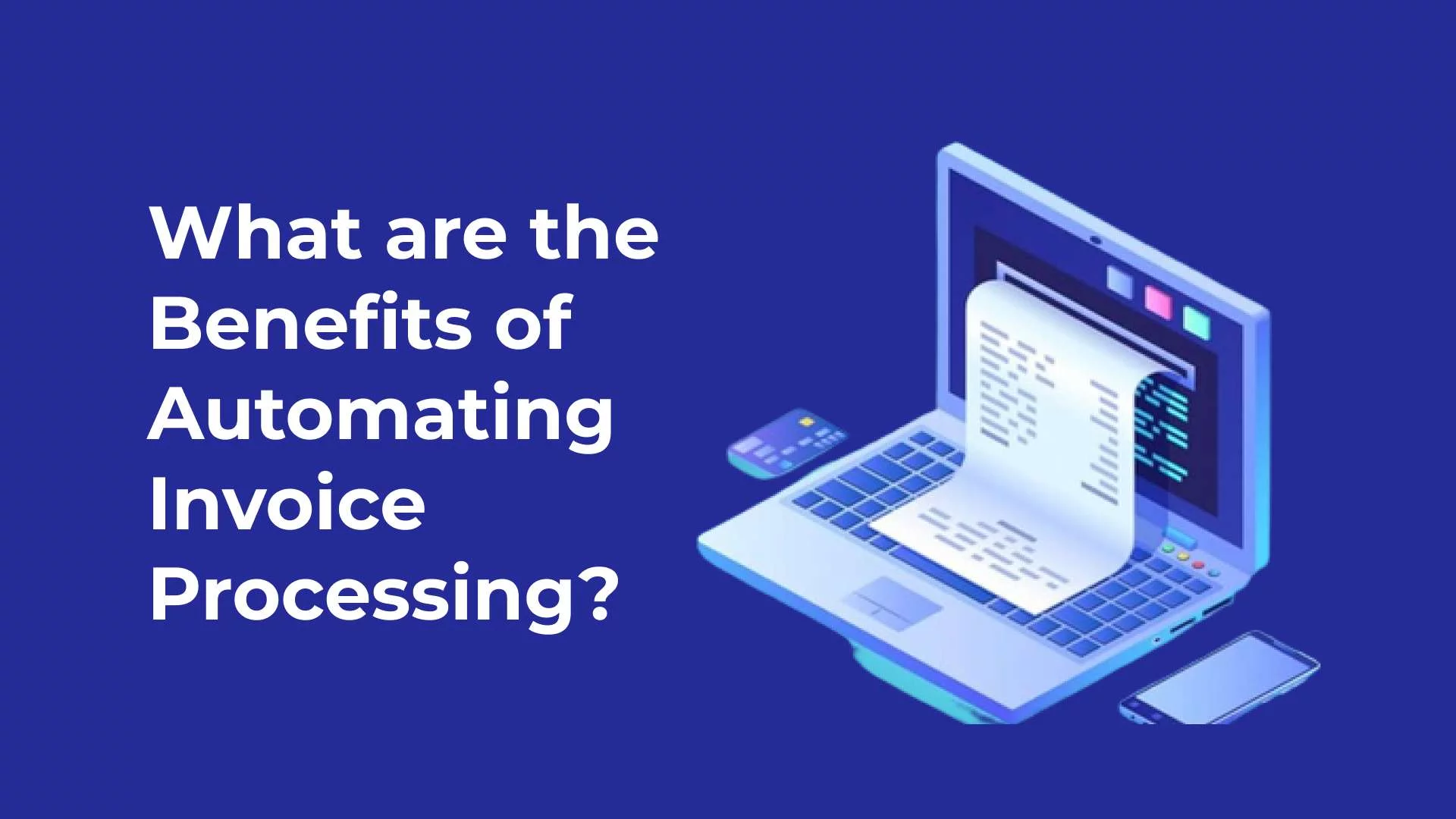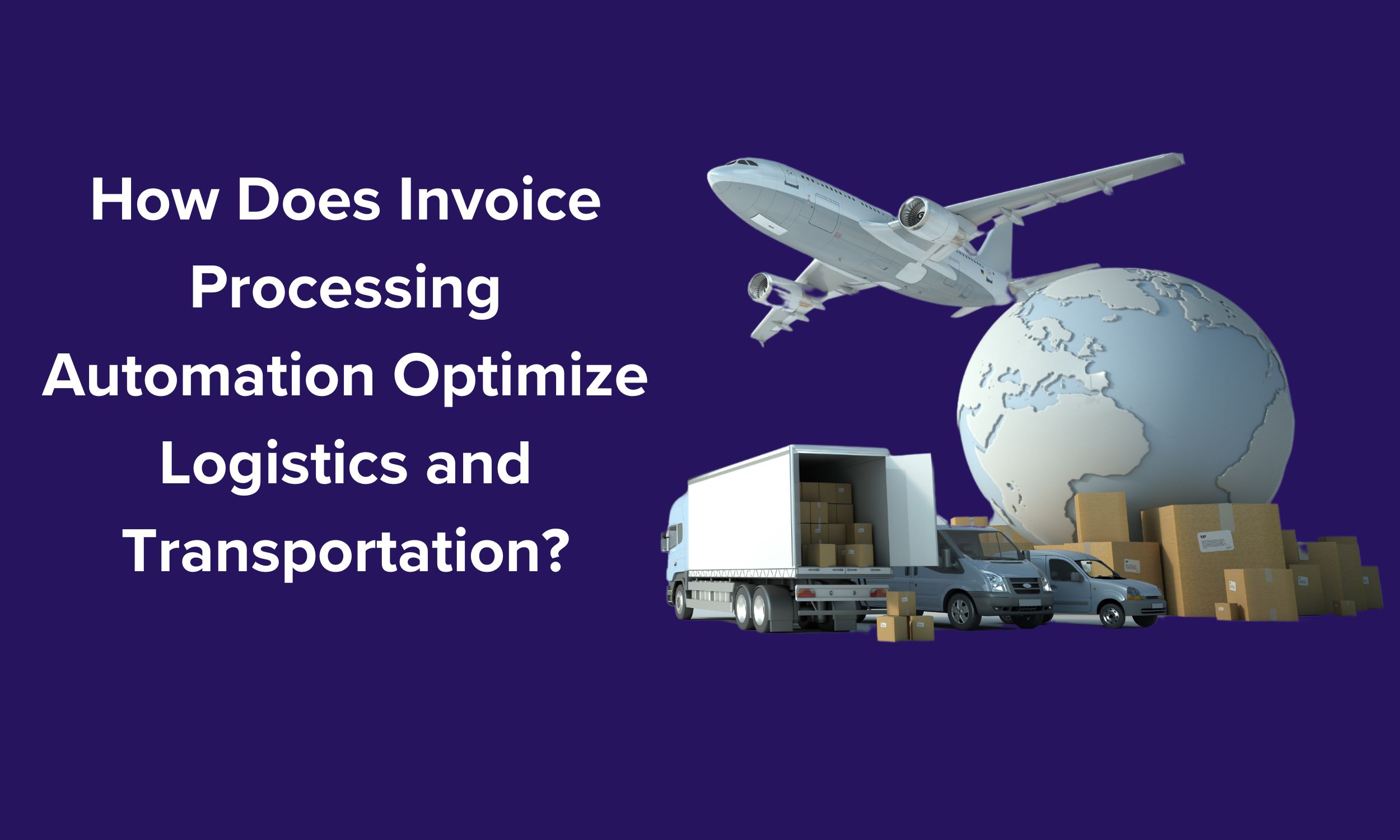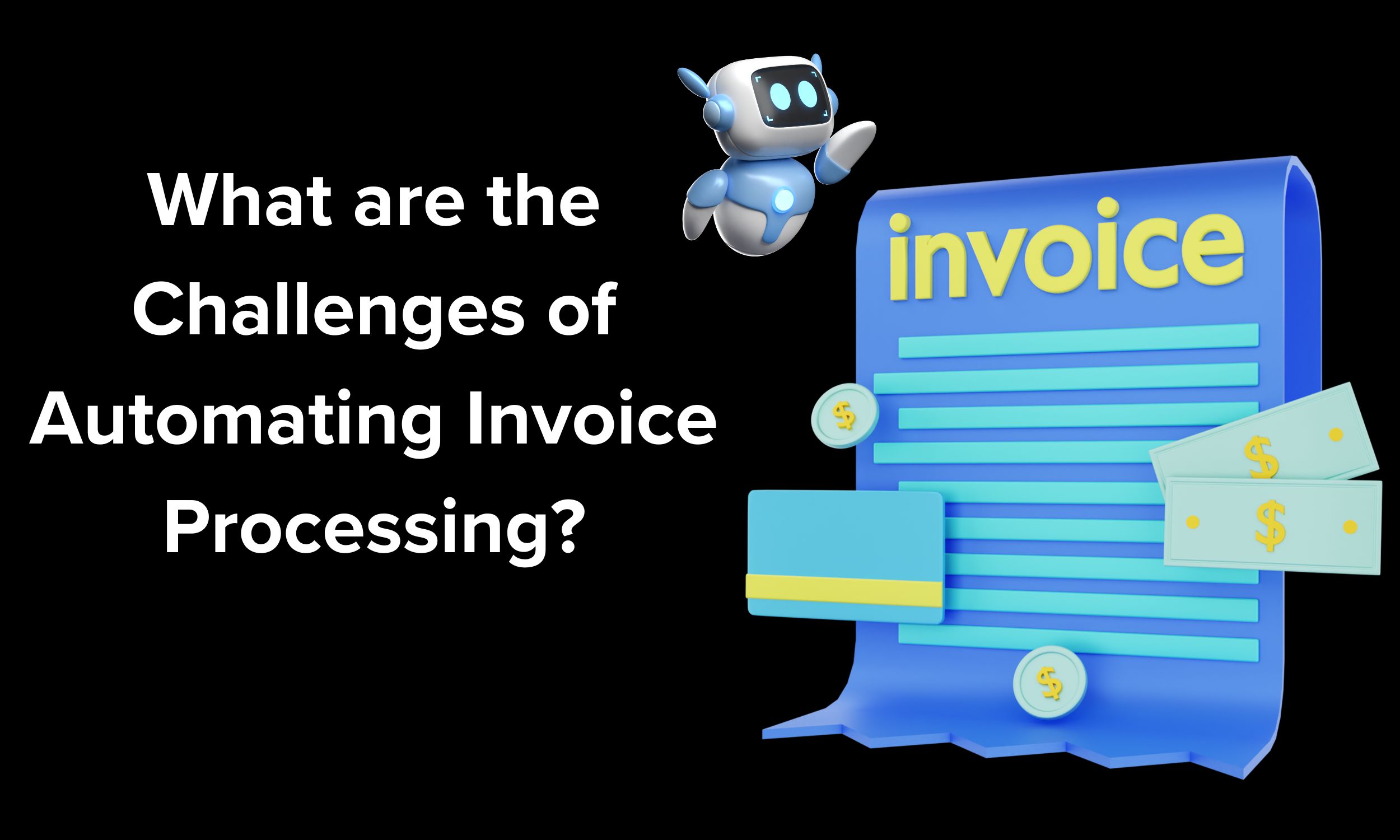What is the Future of Automated Invoice Processing?
In the fast-paced world of technology, businesses are continuously striving to enhance their operations and maximize efficiency. A notable area that has experienced substantial progress is automated invoice processing. Businesses have the opportunity to revolutionize their invoice management systems by leveraging artificial intelligence (AI) and machine learning (ML). Most of the people think about what is the future of automated invoice processing. So in this article, we will delve into the future of automated invoice processing, exploring its prospective advantages, challenges, and the profound influence it can have on businesses across various industries.
The Rise of Automation in Invoice Processing
1. Traditional Invoice Processing Challenges:
Invoice processing has long been a laborious and error-prone task for businesses. The traditional approach involves manual data entry, repetitive processes, and the inherent risk of human error. These factors contribute to inefficiencies, delays, and increased costs. Moreover, the need for real-time visibility into invoice status and financial data creates obstacles in decision-making and strategic planning.
Manual data entry is a time-consuming process requiring employees to input invoice details into the system manually. This consumes valuable time and increases the likelihood of errors due to typos or misinterpretations of information. The need for manual intervention at every step makes the entire process susceptible to delays and potential bottlenecks.
Repetitive processes further compound the challenges of invoice processing. Matching invoices with purchase orders, verifying quantities and prices, and ensuring compliance with contractual terms are often performed manually, leading to a significant drain on resources and increased processing time.
Human error poses a constant risk in traditional invoice processing. Misplacing or misreading numbers, mistyping information, or overlooking crucial details can result in incorrect data entry, leading to payment discrepancies, delayed payments, or even financial loss. Furthermore, without real-time visibility into invoice status and financial data, businesses lack the necessary insights for effective decision-making, hindering their ability to forecast, budget, and strategize effectively.
2. The Promise of Automation:
Automation holds the future of invoice processing, providing a solution to the challenges traditional methods face. Through the use of AI and machine learning algorithms, businesses can extract, validate, and process invoice data with unprecedented accuracy and efficiency. Automation transforms how businesses manage their finances, revolutionizing invoice management.
One of the key advantages of automation is the elimination of manual data entry. AI-powered systems can directly extract invoice information from digital or scanned documents, reducing the need for human involvement. In this way, businesses can increase productivity, reduce errors, and free up their employees for more valuable duties by automating labor-intensive tasks.
Automation also addresses the issue of repetitive processes. Through AI and ML algorithms, businesses can automate tasks such as matching invoices with purchase orders, verifying quantities and prices, and ensuring compliance with contractual terms. This accelerates processing time, improves accuracy, and ensures consistency across the board.
Furthermore, automated invoice processing provides enhanced operational transparency. Real-time visibility into invoice status, payment details, and financial data empowers businesses with timely insights. This enables proactive decision-making, optimized cash flow management, and stronger supplier relationships. Businesses can monitor the progress of invoices, identify any bottlenecks in the approval workflow, and take necessary actions promptly. Access to up-to-date financial information facilitates informed decision-making and strategic planning.
Unlock the Future of Automated Invoice Processing! Get ahead today.

Critical Advancements in Automated Invoice Processing
1. Optical Character Recognition (OCR) Technology
Optical Character Recognition (OCR) technology has undergone remarkable advancements in recent years, revolutionizing how automated systems extract relevant information from invoices. OCR algorithms have become more sophisticated, enabling them to handle various document formats and languages and decipher handwritten invoices. This breakthrough offers businesses greater flexibility and reliability in invoice processing.
Gone are the days of manual data entry, where employees would spend hours painstakingly inputting invoice details into a system. OCR technology scans invoices, identifies characters, and converts them into machine-readable text. By accurately recognizing and interpreting invoice information, automated systems can rapidly streamline the data extraction process.
Moreover, advanced OCR algorithms have become adept at handling diverse invoice formats. OCR technology can swiftly analyze and extract relevant data, whether a PDF, scanned image, or electronic document. This versatility eliminates manual sorting and formatting, saving valuable time and resources.
Language barriers are no longer an obstacle for OCR technology either. With multilingual capabilities, OCR algorithms can process invoices in different languages, catering to the increasingly global nature of business operations. This feature empowers businesses to streamline invoice processing across international markets, improving operational efficiency and reducing errors.
OCR technology’s ability to decipher handwritten invoices is another remarkable advancement. Previously, handwritten invoices posed a significant challenge due to their variability and the potential for misinterpretation. However, modern OCR algorithms leverage machine learning techniques to train models on diverse handwriting styles, enabling them to recognize and extract relevant information from handwritten invoices accurately. This breakthrough ensures businesses can automate their invoice processing regardless of the form invoices take.
2. Machine Learning for Intelligent Invoice Data Extraction
Machine Learning (ML) is important in automated invoice processing by enabling systems to learn from historical invoice data and continuously improve accuracy. ML algorithms can recognize patterns, validate invoice information, and automatically identify anomalies or potentially fraudulent activities. By leveraging ML, businesses can enhance overall data quality and optimize invoice processing workflows.
The strength of ML lies in its ability to adapt to specific business requirements. ML algorithms can identify trends, patterns, and exceptions by analyzing vast amounts of historical invoice data. This learning process allows the system to continuously refine its data extraction techniques, ensuring it becomes increasingly accurate.
For instance, an ML-powered invoice processing system can learn to identify standard invoice fields such as vendor name, invoice number, and total amount. As the system encounters more invoices, it can adapt its algorithms to handle variations in formats, layouts, and terminology specific to the business. This adaptability reduces the need for manual intervention and provides businesses with a highly efficient and customizable invoice-processing solution.
ML algorithms also play a crucial role in detecting invoice anomalies or fraudulent activities. By learning from historical data, the system can identify irregularities such as duplicate invoices, suspicious payment terms, or unexpected changes in invoice patterns. This automated fraud detection capability enhances the overall security and trustworthiness of the invoice processing system, safeguarding businesses from financial risks.
3. Integration with Enterprise Resource Planning (ERP) Systems
Integrating automated invoice processing systems and Enterprise Resource Planning (ERP) systems is a business game-changer. This integration allows for seamless data transfer, real-time synchronization, and improved end-to-end visibility of financial processes. Businesses can achieve faster processing cycles and gain better financial control by eliminating manual data entry and enabling direct invoice-to-payment matching.
Traditionally, the manual transfer of invoice data from the processing system to the ERP system was time-consuming and prone to errors. With automated integration, invoice data flows seamlessly between systems, reducing the risk of data entry mistakes and ensuring accurate financial records.
Real-time synchronization between the automated invoice processing system and the ERP system provides businesses up-to-date visibility into invoice status, payment information, and financial data. This real-time access empowers decision-makers with accurate and timely information, enabling them to make informed choices and proactively optimize cash flow management and supplier relationships.
Moreover, direct invoice-to-payment matching enhances financial control by automating the reconciliation process. When an invoice is received, the system can automatically match it with the corresponding purchase order and payment, ensuring accuracy and reducing the risk of overpayments or duplicate payments. This seamless integration streamlines financial processes and improves operational efficiency, freeing resources for more strategic tasks.
Integrating automated invoice processing systems with ERP systems provides businesses with a comprehensive and synchronized approach to managing their financial processes. It enables organizations to leverage the benefits of automation while maintaining seamless connectivity with their existing systems, resulting in enhanced efficiency, accuracy, and financial control.
Discover the Future of Automated Invoice Processing now!

Benefits of Automated Invoice Processing
1. Time and Cost Savings:
Automation drastically reduces the time and effort required to process invoices, allowing employees to focus on more value-added tasks. Eliminating manual data entry and increasing processing speed contribute to cost savings and improved operational efficiency.
Explore our other insights!

Step-by-Step Guide to Implementing Automated Invoice Processing
Processing invoices by hand is both labour‑intensive and error‑prone, particularly for growing businesses. As transaction volumes rise, so

What are the Benefits of Automating Invoice Processing?
What are the benefits of Automating Invoice Processing? The issue of manual invoice processing is widespread in various

How Does Automated Invoice Processing Streamline Business Operations?
How Does Automated Invoice Processing Streamline Business Operations? Automated Invoice Processing: Invoices are a common part of daily
2. Enhanced Accuracy and Compliance:
Automated systems minimize human error and ensure compliance with regulatory standards. ML algorithms can flag potential errors, inconsistencies, or fraudulent activities, reducing the risk of financial loss and improving audibility.
3. Real-time Visibility and Decision-making:
Automated invoice processing empowers businesses with actionable insights by providing real-time access to invoice status, payment information, and financial data. Improved visibility enables proactive decision-making, optimized cash flow management, and enhanced supplier relationships.
4. Scalability and Flexibility:
Automation allows businesses to handle more invoices without requiring additional resources. As companies grow or experience fluctuations in invoice volumes, automated systems can quickly adapt and scale to meet changing demands.
Challenges and Considerations
1. Initial Implementation and Integration:
While the benefits of automated invoice processing are compelling, implementing such a system requires careful planning, configuration, and integration with existing processes and procedures. To ensure a smooth transition, businesses must allocate resources for setting up systems, training, and managing change.
2. Data Quality and Variability:
Automation relies heavily on accurate and standardized data. Variations in invoice formats, layouts, and quality can pose challenges for OCR and ML algorithms. Businesses must invest in data cleansing, normalization, and continuous monitoring to maintain data accuracy and system performance.
3. Security and Data Privacy:
Automated systems handle sensitive financial data, making data security and privacy paramount. Businesses must implement robust security measures, comply with data protection regulations, and regularly update systems to address emerging threats.
The Future Landscape
1. Advanced AI and Cognitive Technologies:
The future of automated invoice processing lies in integrating advanced AI capabilities such as natural language processing (NLP) and cognitive automation. These technologies will enable systems to understand invoice content contextually, make intelligent decisions, and handle complex scenarios autonomously.
2. Blockchain for Trust and Transparency:
Blockchain technology holds the potential to revolutionize invoice processing by providing an immutable and transparent ledger. By leveraging blockchain, businesses can ensure invoice authenticity, prevent fraud, and streamline inter-organizational invoice settlements.
3. Predictive Analytics and Forecasting:
With access to large volumes of invoice data, automated systems can leverage predictive analytics to forecast cash flow, identify payment trends, and optimize working capital management. These insights enable businesses to make informed financial decisions and proactively address potential challenges.

Conclusion
The future of automated invoice processing represents a significant leap forward in optimizing business efficiency, reducing costs, and improving decision-making. Advancements in AI, ML, and integration capabilities have paved the way for transformative changes in invoice management. While challenges exist, careful planning, data quality management, and security measures can ensure successful implementation. As the technology evolves, businesses can look forward to a future where automated invoice processing becomes an integral part of their operations, unlocking unprecedented productivity and agility.
FAQs
1. How does automated invoice processing work?
Ans: Automated invoice processing utilizes technologies like optical character recognition (OCR) and machine learning algorithms to scan and extract relevant information from invoices, eliminating the need for manual data entry.
2. Can automated invoice processing handle different invoice formats?
Ans: Yes, advanced automated systems can handle various invoice formats, including PDFs, scanned images, and electronic documents, enabling businesses to process invoices in a flexible and efficient manner.
3. Is automated invoice processing compatible with multiple languages?
Ans: Absolutely. Automated invoice processing systems can handle invoices in different languages, allowing businesses to streamline invoice processing across international markets and overcome language barriers.
4. Can automated systems process handwritten invoices?
Ans: Yes, with advancements in OCR technology and machine learning, automated systems can accurately extract information from handwritten invoices, providing businesses with comprehensive invoice processing capabilities.












